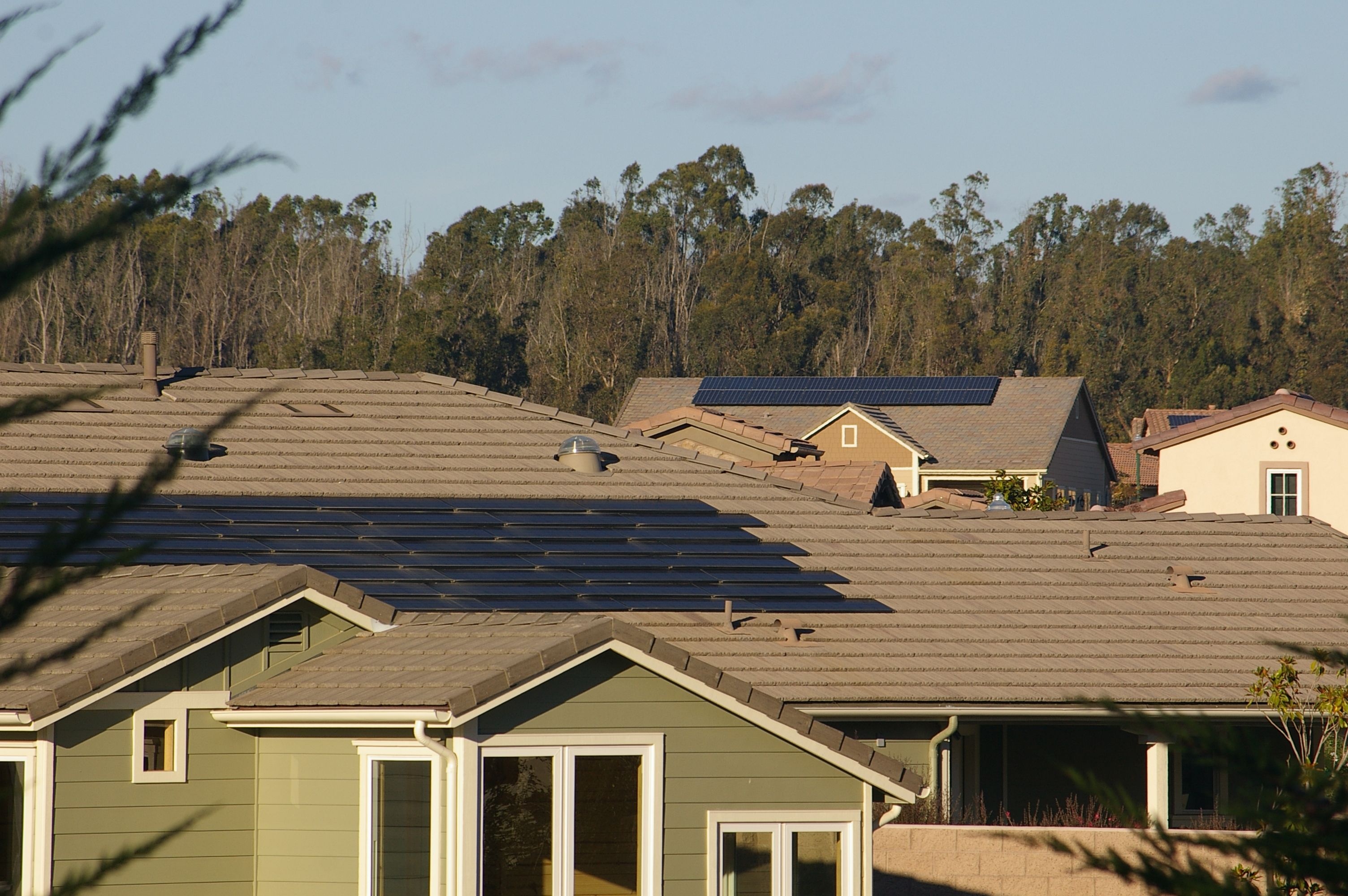
Uploaded on 2015-12-14 by BradleyJG
There is no quick solution to dealing with dominant fossil fuel use. A multi year plan would need to be put into effect. Prior to automobile dependence, the United States had extensive rail systems, both national and regional. With the promotion of the automobile, these systems were largely dismantled to force the population into cars. Dependence on cars has created vast networks of roads, congestion, polluting emissions etc. At the same time, domestic oil production has declined requiring reliance on imported oil. People who are unable to drive either because of age (too young or too old), expense, or other reasons are often unable to reach amenities easily. The right of way easements from the era of the trains still exists, offering the opportunity to build local transportation systems in and around communities as well as between communities. **Encouraging Use of Public Transportation** In order to encourage people to use public transportation, walk or bike, areas of cities should be closed to automobile traffic and serviced only by the public transit system, with plans to expand the system in terms of capacity and influence on an annual basis and as ridership increases. Automobile parking options close to city centers should be pay parking with a fee scale that will increase annually, making the use of a car undesirable. In order to keep automobile drivers from driving to other towns instead, the policy of pedestrian friendly city centers and pay parking would have to apply to all cities. ![Pedestrian friendly town center][1] *The above diagram illustrates the changes to a street landscape by increasing pedestrian friendly city centers and reducing and discouraging automobile access.* The status symbol of car ownership will only be successfully countered when using public transportation is convenient and less expensive than owning and operating an automobile. A public relations campaign to educate people about the emissions of automobiles and the health consequences, could undermine the imagined status symbol of owning a big pickup truck or sports utility vehicle by switching the mindset of people from “cool” to “what a gas guzzling polluter.” Incentives to encourage people to purchase electric vehicles could be used in conjunction with access limitation. Owners of electric vehicles could have access to areas where non-electric vehicles are prohibited. Regional transportation systems would provide connectivity between communities. Initially, these might be buses similar to the Bus Rapid Transit system used in Curitiba, Brazil. In communities with a strong uptake of users, development of light rail systems to accommodate increasing ridership can be planned for and accommodations made within new developments. **Clean Energy** As part of the clean energy initiative, every new building, and building renovation would be required to have photovoltaics, or an alternative renewable energy system, as part of its design. Just as carbon monoxide and smoke detectors and sprinklers are required in new and renovated buildings, sustainability features should be required. Whether solar panels on roofs, better wall insulation, or improved window and door weather proofing, some improvements should be part of the approval process. More efficient homes and businesses would reduce secondary and tertiary sources of oil consumption. ![Integrated Solar Module Roof][2] *In the picture above, the foreground home was built with photovoltaics as an integrated part of the roof. In the background is a home which added panels at a later time.* Regional transportation systems would be built around clean energy buses and light rail systems serving adjacent communities with regular service. With more renewable energy sources available, electric vehicles could be encouraged in cities and eventually mandated. Free charging stations, connected to a local clean energy system, would help encourage participation. A depot at the edge of the city would allow large trucks and trains to deliver goods in bulk. The depot would then send the goods to their final destinations via electric vehicle. As residents choose not to incur the expense of automobile ownership, car sharing or short time hire electric cars could be available for occasions when a resident's needs cannot be met by public transportation. Urban parking areas, which currently only contribute to the heat island effect, would be made to provide shade to vehicles with solar module canopies. Additionally, parking areas would be required to place green islands with trees between every other row of parking, forming a photovoltaic shading, tree shade, arrangement. Photovoltaics are less effective when they become too hot, providing trees and shrubs will increase evapotranspiration, cooling the surrounding area making the environment more comfortable for people and more productive for photovoltaics. ![Solar Parking Cover Being Installed in Santa Maria][3] *Installation of solar power plant over parking in Santa Maria.* ![Solar Power Plant at Local School][4] *This solar power plant provides shade for teachers' cars at the local elementary school.* **Health in the City** As part of the move away from a car-centric city model, the development of walking and biking paths, would allow people additional options for reaching destinations, and gaining daily exercise without concern for their physical safety due to traffic or breathing high levels of pollutants. Where streets with multiple traffic lanes in each direction are no longer required, the excess space can be reclaimed and planted with shade trees, shrubs and have dedicated bicycle lanes and pedestrian sidewalks installed. For example, a city center street with 6 lanes for traffic could be reduced to 2 lanes for buses and automobiles. Creating a safe, comfortable and clean environment will encourage people to go outside. Increased activity will improve people’s fitness and help combat obesity. *http://www.iea.org/sankey/#?c=United%20States&s=Balance* *http://www.iea.org/sankey/#?c=United%20States&s=Final%20consumption* [1]: https://edxuploads.s3.amazonaws.com/1450117715385388.jpg [2]: https://edxuploads.s3.amazonaws.com/14501179281154279.jpg [3]: https://edxuploads.s3.amazonaws.com/14501181131688683.jpg [4]: http://